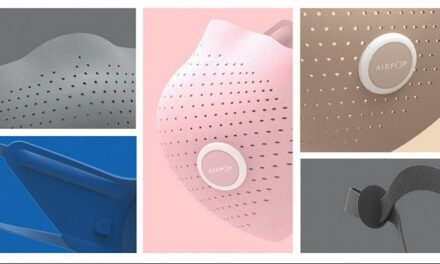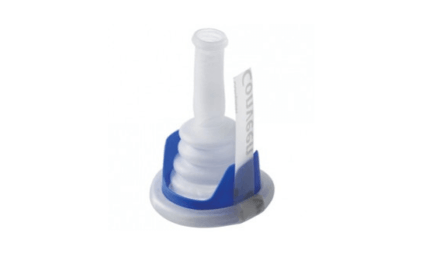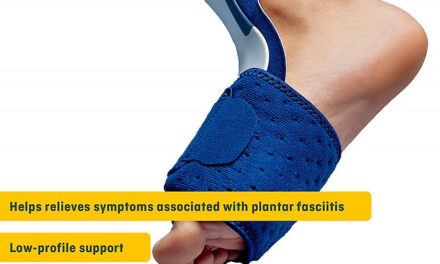The common concern that most diabetics face is neuropathy which can result in amputation in severe cases. People with diabetes take numerous measures to reverse and stop the progression of this nerve pain, sometimes with drugs and sometimes using technologies. One of those trendy technologies is Infrared Light Therapy.
This guide will look into the benefits of Infrared Light Therapy for diabetics, and what to be concerned about before considering it.
Before jumping into Infrared Light Therapy, let’s cover some background about diabetic neuropathy (also known as nerve pain) to find out how Infrared Light Therapy may help.
What is Neuropathy?
Neuropathy is the result of damage to the nerves outside of the brain and spinal cord (peripheral nerves). It can cause intense pain on the hands or legs which some patients describe as a burning, stabbing, or tingling sensation. It is sometimes accompanied by other symptoms like
- The weakness of the muscles
- Increased sensitivity to heat or touch
- Poor coordination
- And sometimes depending on the type of neuropathy, it can also cause paralysis.
Some cases of neuropathy can be treated easily and cured, and in cases where it cannot be cured, targeted treatments help in controlling and managing pain and symptoms to prevent further nerve damage.
Given neuropathy can make it difficult for you to carry out your everyday activity, a lot of people suffer from it seek for a drug-free, portable, easy to use method or device to manage the pain and symptoms with little or no side effect. Using infrared therapy may just be what the answer they seek.
Recently, the use of Infrared treatment has become popular because of the benefits it provides, which includes relieving chronic pain like pains associated with neuropathy and other symptoms.
For patients suffer from neuropathy, infrared therapy can help to increase vasodilation, that is it to expand the blood vessels and improve blood circulation at the extremities. This allows the blood flow to the damaged nerves and tissues with oxygen and nutrient needed for the cells around to regrow, regenerate and heal faster. The increase in blood circulation also reduces inflammation. Many patients who use this non-invasive method, have reported great relief after using an infrared device.
But, is that all true about infrared light therapy? What to be concerned about as a diabetic patient?
Let’s find out.
First, let’s look at what we mean by light therapy and infrared light therapy.
What is Light Therapy?
Light therapy, also commonly known as phototherapy, is the use of natural light (sunlight) or artificial light set at particular frequencies and intensities to treat various types of health issues and skin conditions. There is evidence that this therapy can help to ease the symptoms of both physical, emotional illness.
The benefits of light are not a secret to the medical community. A lot of health professionals make use of different types of light therapy, sometimes they combine it with other forms of treatment.
There are many light spectrums currently prescribed for medical treatment.
The following are examples of light therapies
- Ultra Violet (UV) light therapy used to increase the vitamin D levels and manage auto-immune or skin conditions which are as a result of allergic reaction like eczema, psoriasis and vitiligo.
- White, blue or blue-green light therapy use in the treatment of jaundice in newborns.
- Bright blue or white light therapy for treating symptoms of seasonal affective disorders (SAD), circadian rhythm disorders, and jet lag.
- Red light and near-infrared wavelengths which triggers a photochemical reaction that stimulates the cells to generate energy and start a self-repair process which has anti-inflammatory and anti-aging effect and also help to hasten the healing of the wound.
Tip: IFC and TENS technologies are also helpful in treating pains and injuries.
Light Therapy vs Heat Therapy – The Difference
Both heat therapy and light therapy are used for pain management, and they both can help to improve vasodilation (the expansion of blood capillaries) and increase blood circulation. Although most of the source of light energy also emit heat energy, it doesn’t mean that their use, benefit and risks of both light and heat therapy are the same.
The following are some of the differences between light and heat therapy.
- Other Names – Light Therapy vs. Heat Therapy
Light therapy, also known as phototherapy, is the therapeutic use of light either from the sun or some other form of light of specific wavelength for treatments.
In contrast, heat therapy, also called thermotherapy, is the use of heat in medical treatments, for pain relief and to promote health.
- Uses – Light Therapy vs. Heat Therapy
Light therapy is used for the treatment of the seasonal affective disorder (SAD), depression, neonatal jaundice, skin issues like acne, psoriasis, eczema, and certain types of skin cancer. It is also used as a potential treatment for chronic wounds, and as an alternative to close acute wounds instead of stitching.
On the other hand, heat therapy is effective and beneficial for improving the ability of the collagen tissues to stretch, reduce stiffness of the joints; alleviate joint and muscle pain; relieve muscle spasms; alleviate edema, inflammation, and to help drain abscesses faster. It is beneficial to people suffer from arthritis and deep tissue injuries.
Tip: You could consider heated slippers too.
- Application – Light Therapy vs. Heat Therapy
Heat therapy can be applied using hot materials like;
o hot cloth,
o hot water bottle,
o heating pad,
o saunas or devices that can emit heat like ultrasound,
o far-infrared heat therapy wraps.
Others while natural daylight/sun or other forms of light radiation such as infrared, x-rays, visible light, ultraviolet and gamma radiation, lightboxes are used for light therapy.
- When Not To Use– Light Therapy vs. Heat Therapy
Light therapy is contraindicated if you have
o eyes conditions that make your eyes to be at risk of light damage,
o skin conditions that make your skin sensitive to light, or
o if you are on medications that increase your sensitivity to sunlight, like certain antibiotics, anti-inflammatories, St. John’s Wort herbal supplement, lithium, phenothiazine antipsychotics and melatonin.
The use of heat therapy is contraindicated in case of tissues with a severe lack of sensitivity, scars, tissues with inadequate vascular supply and in case of acute injury and bleeding disorders.
Now let’s learn what we meant by Infrared Light Therapy.
Infrared Light Therapy
Infrared light therapy is a type of light therapy that involves the use of infrared light to heal the targeted part of the body. This therapy is safe, natural, non-invasive and less painful.
It involves exposing the part of your body you want to heal to sufficient intensity of infrared light which promotes cell regeneration. The infrared light therapy uses the photo-stimulation principle.
One of the main features of infrared light is its ability to penetrate deep into layers of the skin to provide pain relief.
It is used as
- alternative medicine in the fields of medicine,
- veterinary medicine,
- in auto-immune diseases management and
- in dentistry, and
- to treat and relieve health conditions like muscle and joint pains, arthritis, stiffness of the joint, diabetes neuropathy etc.
Tip: This is MediChannel’s Infrared Heating Mats Review.
Infrared light is an invisible light with a frequency that is lower than the red light. Its wavelength is between 700 nanometers to 0.1 millimeters and can be divided into near, mid, and far-infrared light.
The longer the wavelength, the lower the frequency and the deeper the light can penetrate into tissues.
The principle behind the infrared therapy is photostimulation. This principle is based on the idea that the human body cells react to sunlight naturally. The heat from the light can boost blood circulation in the affected area of the body by triggering the production of nitric oxide. So, by using infrared therapy for treatment, the affected area receives more supply of oxygen and nutrient needed for proper healing as a result of the increase in blood circulation.
Infrared therapy also boosts the production of Collagen and Adenosine Triphosphate (ATP), Deoxyribonucleic Acid (DNA) and Ribonucleic Acid (RNA). All these have a lot of benefits which includes pain relief and tissue repair.
Now let’s learn what Near-Infrared Light Therapy is.
Near-Infrared Light Therapy
uses near-infrared radiation, also known as infrared A (IR-A), with a wavelength between 700 and 1400 nanometer energizes the cells to stimulate the healing of tissues and relieve pain.
It generates heat more than the other mid and far-infrared radiation but does not penetrate deep into the tissues.
The benefits of near-infrared light therapy are mostly the same as red light therapy, except for the fact that the near-infrared radiation fall in the invisible light spectrum will the red radiation is visible. In addition, the near-infrared radiation penetrates deep into the body the soft tissues, muscles, bone and joints, which is deeper than the red radiation.
FDA has approved it for the management of certain medical conditions.
It is used for
- increasing metabolism,
- reducing inflammation and to speed up the wound healing,
- pain relief,
- slow down aging,
- weight loss and many more.
Now let’s learn what is Near-Infrared Light Therapy.
Far Infrared Light Therapy
Far-infrared therapy is the use of far-infrared radiation, which is a subdivision of the electromagnetic spectrum, a type of infrared light with wavelengths between 3000 nanometer – 0.1 millimeter.
Far Infrared is also known as infrared C C(IR-C), long-wave infrared or thermal infrared (thermal-IR).
Far infrared radiation penetrates deeper into the tissues than the near or mid-infrared radiation. Its health benefits come from both its thermal and non-thermal properties.
It is used as a vital type of physiotherapy, to help improve the health of patients with heart and vessel diseases, diabetes mellitus, and kidney diseases.
Far-infrared light can effectively reduce inflammation, increases arterial and peripheral blood circulation, reduce oxidative stress. It reduces pain and fatigue, improves hearth health and dilate the blood vessels, which helps to reduce and normalize the blood pressure.
Far infrared is what is used in infrared saunas.
Infrared Light Therapy vs Red Light Therapy – What’s The Difference?
Light is an electromagnetic radiation with both frequencies and wavelength. Light energy can be visible or invisible depending on the wavelength. Light energy with a wavelength that ranges between 400 – 700 nanometer are visible, and the ones outside this range are invisible and can only be felt such as infrared light.
Red light and infrared light are both types of light therapies that are becoming popular in many spas, beauty and wellness centers. They both provide skin rejuvenating benefits. They are both natural, non-invasive, drug and chemical-free, safe, painless with no adverse effect. Many see both of them as the same or often confuse one for the other, but they are different, and the benefits they provide are different.
So before running off to go and get a red light or infrared therapy, you need to know what the difference between the two treatment types is? This will help you to choose the one that will give you the outcome you want in the end.
Red light is visible with a wavelength of 630-700 nanometer. It is very effective for treating problems on the surface of the skin. It stimulates collagen production and in the regeneration of skin tissue, keratinocytes and fibroblasts by stimulating cellular processes in the skin. It is used in spas for beautifying the skin by smoothing the skin, healing wounds and scars and reducing skin inflammation.
Infrared light is invisible and is next to the red light on the electromagnetic spectrum with a wavelength of 800 nanometers to 1.2 millimeter. It is very effective for treating problems the skin surface and because it has a longer wavelength than red light, it can also penetrate about 1.5 inches into the body. It can be used for easing acute and chronic muscular and joint pains, to help burn calories, remove toxins from the body and, help you to relax.
Benefits of Light Therapy
- Is a drug-free and natural way for relieving headaches, muscle and joint pains
- It helps to prevent hair loss and promotes hair growth.
- For treating most types of depression especially, seasonal effective disorder.
- Treats acne and gives you clearer skin by penetrating into your skin and killing some of the acne-causing bacteria underneath; by reducing the amount of sebum, or oil, that your skin produces; and by reducing inflammation.
- It helps to reduce the appearance of your stretch marks.
- Light therapy triggers the release of serotonin which improves our mood and boost our energy level.
- Helps with insomnia
It resets our circadian rhythm to its natural state and regulates melatonin which helps to improve sleep and ability to stay focus.
Benefits of Infrared Light Therapy
- Improves cardiovascular health
Infrared light increases the production of nitric oxide, which helps to calm the arteries and prevents the clotting and clumping of blood.
- Boost circulation of blood in the body
The increased production of Nitric Oxide also helps to improve blood circulation, which supplies more oxygen and nutrient to the injured part.
- Stimulates wound healing
The infrared light hastens the healing of wounds by stimulating the actions of the mitochondria within the cells which triggers the regeneration of injured tissues.
- Ease joint pain and inflammation
Infrared light because of its ability to penetrate deep down layers of skin to the muscles and bones and its ability to boost circulation which supplies oxygen and nutrients to injured tissues to hasten to heal, can help to promote healing of injured tissues, relieve joint and muscle pain, ease inflammation.
- Promote detoxification, boost metabolism and aid in weight loss
Infrared Light helps to boost metabolism by increasing your core body temperature which will result to detoxification at a cellular level and weight loss by breaking up the fats and toxins trapped in your body which you will sweat out.
- Improve sensory threshold
Helps to restore a normal sensory threshold back to the feet of diabetic patients suffer from neuropathy.
- Helps to improve cognitive skill after traumatic brain injury
- Enhances the functions of the thyroid gland
Does Infrared Light Therapy Help Diabetes?
If you are diabetic and you are looking for a natural, drug-free and painless way to manage your diabetes without any short-term or long-term side effects, infrared light therapy may be the perfect solution.
Most Diabetics usually develops issues like
- poor circulation, which in some cases can result in amputation of the extremities.
- chronic leg pain as a result of diabetic neuropathy,
- A decrease in the efficiency of the lymphatic system which helps in removing toxin and metabolic waste from the body
- The risk of developing high blood pressure is also higher in diabetic patients.
The Infrared therapy can help with most of these problems because it can help to improve the function of the nervous system and boost the circulation especially to at your lower extremities which will help relieve pain as a result of neuropathy and also hasten the healing of diabetic foot ulcer.
It can help you increase the heart rate, and may cause you to sweat excessively thereby helping you to remove toxins and metabolic waste from your body.
How Infrared Light Therapy Help Diabetes?
Infrared light has the ability to penetrate 2-7cm deep into the skin and provides a favorable environment for the body to heal itself.
Recent studies have proved that infrared light is effective for treating diabetic foot ulcers and restoring a normal sensory threshold back to the feet of patients suffer from peripheral neuropathy by using the following process.
- It uses the photostimulation process to stimulate the production of nitric oxide.
Nitric oxide causes vasodilation, that is, it dilates or expands the blood vessels which helps to reduce blood pressure, and increases blood circulation. Nitric oxide also prevents the clumping of blood in the arteries. The increased blood flow helps to transport healthy oxygen nutrients to the cells around the damaged tissues and nerves.
- Infrared light also triggers the cells to increase the production of vitamin D.
Vitamin D helps prevent muscle pain and fatigue, and it also helps to increase the production of natural growth hormones which promotes the growth of new cells and tissues.
With the supply of oxygen and nutrients to the cells around the damaged tissue or nerves and the increase in the level of vitamin D, the cells can speedily regenerate and be repaired. Infrared light also has anti-inflammatory properties, this reduces swelling in the tissue which helps to relieve pain too.
Benefits of Infrared light therapy are commonly put into practice at specialized saunas.
What is an Infrared Sauna?
An infrared sauna is a type of sauna that uses infrared light to generate heat. Unlike the regular type of sauna that warms out the body by warming the surrounding air using heat, an infrared sauna will warm or body directly and not the surrounding air.
Infrared sauna can be used for health conditions like high blood pressure, diabetes, headache, congestive heart failure, rheumatoid arthritis, dementia and Alzheimer’s disease.
Tip: Here are the best foot massagers for diabetics.
Infrared sauna can be used as an alternative to moderate exercise because it triggers reactions similar to moderate exercise in the body, reactions like excessive sweating and increased heart rate. Sedentary patients like people suffer from cardiovascular, respiratory problems and osteoarthritis can use the infrared sauna.
Far-infrared sauna is especially good for diabetic patients because it can help to boost blood circulation and reduced physiological stress significantly.
Infrared saunas also help to reduce blood pressure by expanding the blood vessels. According to the National Institute of Health (NIH), it helps to improve the quality of life for those with chronic pain, chronic fatigue syndrome, depression, and congestive heart failure.
How Often Can You Use Infrared Light Therapy?
In order to get a substantial improvement for your pain, neuropathy or ulcer, you need to use the infrared light frequently for 10 to 20 minutes or at least 3 times a week for 2 to 4 months depending on the severity of the pain, nerve damage or foot ulcer.
The duration of use for an infrared device per session may vary depending on the wavelength of the infrared. To prevent the risk of getting a thermal injury, stick to the time prescribed on the infrared device or by your doctor.
Infrared Light Therapy Side Effects and Risks
Although Infrared is light energy, it also emits heat, and one of the major risks associates with infrared therapy is thermal injury. The occurrence of the Thermal injury depends on the wavelength of the infrared device and how long you were exposed to the infrared radiation. It may occur even when you don’t feel any pain.
Repeated exposure to infrared radiations with high temperature may result in hyperpigmentation, scaling, and telangiectasias also known as spider vein. It may also increase the thickness of the skin and damage the eye lenses which may result in cataract.
Although infrared therapy is believed to have a lot of health benefits, it should not be used as a replacement for any prescribed medication for treating chronic disease. It is only meant to be used as a complementary treatment.
It are not advisable for people with some medical conditions to use an infrared device or sauna. So, if you suffer from stroke, multiple sclerosis or if you have a brain tumor or silicon implant, it is best to check with your doctors before using an infrared device. Also, pregnant women, people with heart diseases, and those who are sick (e.g. fever) should avoid infrared therapy.
Conclusion
Poor blood circulation especially at the lower extremities and decrease in nitric oxide production is one of the reasons why the healing of wounds and injury in diabetics is slow. But with the use of infrared radiations, normal sensitivity can be restored to the extremities, neuropathic pain can be relieved and wound healing be hastened.
The use of this therapy stimulates the cells naturally to produce more nitric oxide, which helps to relieve pains by expanding the blood vessels and increasing blood circulation around the affected site. This helps to create favorable conditions for your body to heal itself.
There are many infrared-based treatment units, such as saunas, shoes, and light units specially made for diabetics.
The use of infrared therapy is a complementary medicine, and a lot of research is still ongoing on how effective it is, so this therapy should never be used to replace your prescribed medication. Still, it can be used together for the better and faster result if your doctor approves so.














I trained in molecular spectroscopy, and NIR penetrates much further than mid-ir. At least several cm.